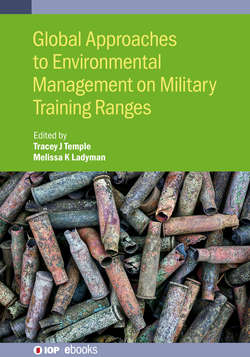Читать книгу Global Approaches to Environmental Management on Military Training Ranges - Tracey Temple - Страница 34
На сайте Литреса книга снята с продажи.
2.3.1 Sample quality criteria
ОглавлениеThe sample quality criteria (SQC) is formulation of the project objectives in such a manner that a sampling protocol can be developed [15]. The USEPA has also developed a similar approach called data quality objectives (DQO). The DQO process can be a bit complicated and makes many assumptions that may not be valid when investigating military ranges; therefore, the less complicated and more universal approach of the SQC process will be described. The three main parts of the SQC process are: (1) the Question that the study attempts to answer, (2) the Decision Unit (DU), and (3) the Confidence desired in the final decision.
1) QuestionWhat is the analyte(s) of interest?– On a training range these may be pyrotechnics, energetics, or metals.What is the concentration of concern?– CoCs are risk-based and may be receptor-specific, i.e. human health or environmental risk.How are the data going to be used to make inference?– Data that is collected must be of sufficient quality and quantity to make the appropriate inferences (e.g. confidence intervals, means, medians, etc).
2) Decision UnitThe DU is the specific mass/volume of material from which increments are collected and to which inference will be made [16, 17]. There may be one or many decision units within a military training complex, such as firing points, target areas, engineer training ranges and fuel or ammunition storage sites.
3) ConfidenceThis is the assurance that the final decision is correct. Confidence can be based on statistical calculations or other techniques. Higher human health risk, public exposure and liability issues all impact the degree of confidence needed for a data set.
For those new to sampling, the most difficult part of the SQC process is determining the parameters (physical and temporal boundaries) of a decision unit. Decision units are typically based either on risk or potential source areas. Risk-based DUs are based on exposure to a receptor in the area in which the receptor typically exists. In cases where there are multiple receptors, multiple-sized DUs may exist within the same area or the DUs may be based on the most sensitive receptor. While the concept of DUs is sometimes ignored, it is critical that the DU be identified or incorrect decisions will result. Much of the work performed by CRREL in applying the concept of MIS to military ranges was based on specifying DUs to best achieve the goals specific to the study. Earlier studies (before 2006) are not to be used as a starting point for determining DUs for an actual military range characterization. The other type of DU is a source-based DU. These DUs are based on the source area/volume and not on risk.
